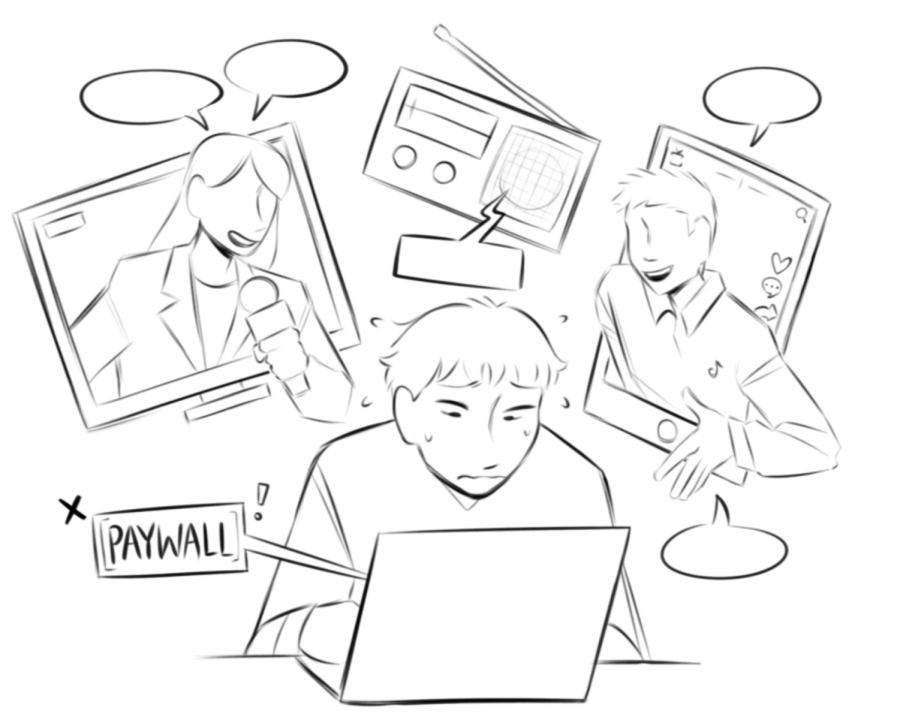Check your information diet
Breaking through barriers of fake news
May 6, 2022
Snapchat’s Discover Page boasts heavily photoshopped graphics and clickbait headlines that seem engineered to monger confusion, fear, curiosity–or a mix of the three–in the unassuming viewer. Who expects to see a title like “What Happens if a Nuke Explodes Near You?” above a cartoon explosion or “Putin Delivers Totally Unhinged Speech” over a picture of him winking at the camera? (Yes, these are real examples.) Clicking on these can instill fear or misinformation–the authors often even leave spelling mistakes.
Considering these appear as “suggested” on Snapchat, and similar media crops up on TikTok, Facebook, or Instagram, it’s essential we re-examine how we get our news. And maybe block a few of those clickbait channels.
The attention-grabbing titles and pictures–potentially making the reader indirectly question if they should be worried about getting hit by a nuclear bomb–rely on those methods to steal clicks, taps, and any interaction. That is how they make their money. They aren’t created by experienced nor reputable writers or publications, so they bank on these anti-informational marketing tactics.
Some might say, “Who cares?” Or, “They’re no real cause for concern. We know how to tell when something like that is unreliable.” But these are extreme examples; other, more insidious manifestations of this click-bait news method are harder to discern from reputable news.
In a sea of information, how do you decide what to read and rely on? The shiny pink Buzzfeed title swimming at the surface, bobbing for a view, or the more obscure Boston Globe article, which maybe takes a bit more time to fish out or digest? Although we might know the brightest animals are usually the poisonous ones, maybe the next-brightest-title grabs our attention, and we consume that instead. The catch is even the less obvious attention-seekers can be unreliable. So, check the nutrition facts on your filet-o-information.
It won’t list carcinogenic red 42 dye, but other ingredients to an article are just as dangerous to our informational health: incorrect stats or context and heavily biased opinions, especially when taken without a contrasting one. Even after you recognize an article’s faults, remnants of the alphabet soup you gobbled up may fall out of your mouth in passing conversation without a second thought. To avoid unintentionally spreading misinformation the next time you try to talk about current events, take note of your librarians’ wise teachings. Look for authors listed, a recent or relevant publishing date, a title that makes sense more than it makes you worry, websites without obnoxious ad pop ups, and other signs of a reputable source.
Dig deep past the earworms and unearth thoughtful reporting, reliable authors, and truth in intersections of opinion. (Editorials are a great way to start!) And if you hit a rock–like a paywall, per se–dig around it. Approximately 70 percent of Upper School (US) survey respondents say that pay walls prevent them from accessing reliable sources. It’s our pleasure to remind you that on the US campus, you can access all of the New York Times for free. o the budgeter out there who didn’t have to allocate funds to The Vanguard’s normal retreat over spring break due to COVID–consider putting that money toward an off-campus subscription for all students.


